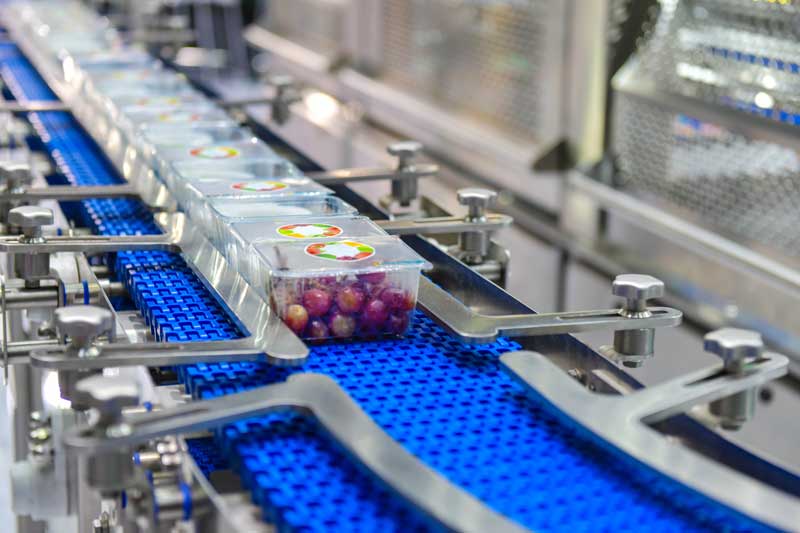By permitting a more consistent output of products, particularly during times of heightened customer demand, manufacturers and packaging businesses can boost their productivity by investing in an automated packaging system.
Automated Packaging System
Although production rates might differ significantly based on the type of product wrapped and automated technology utilized in the packing process, packaging machines boost productivity and eliminate inefficiencies. Companies can typically get a return on investment (ROI) with packaging automation systems in less than a year. Like manufacturing lines, building automated packing systems takes careful consideration from the design stage to the finished system. Investments in new technologies should be balanced against the advantages they bring, even though they are changing what automated packing machines can perform and how they function within other production areas.
What is Automated Packaging System?
The act of packaging products without the assistance of a human being is known as packaging automation. Automated packaging systems have evolved from standalone devices that automate just one step in the packaging process to systems that now seamlessly include all processes into the packaging process. In a recent post, the Automation World noted that several issues, including labor shortages, production speed, and the safety of goods and people, are driving automation and will continue to do so. All automatic or semi-automatic packing devices are available in a range of configurations.
Advantages of Automated Packaging System
The three main elements for most packagers automating their processes will be filling, capping, and labeling. The system will also have some loading and accumulation equipment and conveyors to carry bottles and containers from one machine to the next. In its most basic version, this is a rudimentary automated packaging system that doesn’t require a human operator to start each step. For instance, a system for distilling spirits would include a loading turntable, power conveyors, overflow filler, bottle corker, and front- and back-labeler.
Perfect Quality Assurance:
The task of managing packaging line quality control wasn’t always completely automated in the past because automation solutions weren’t always reliable enough. Instead, human workers were entrusted with the laborious and repetitive task of examining every item. This is altering due to the advancement of new technologies, particularly machine vision utilizing artificial intelligence (AI), which enables computers to “see” faults as human workers do. Some contemporary quality control system creators even claim that their systems are error-free and capable of catching nearly all problems. Automated quality assurance systems are also always active. Thus, their capacity to detect faults won’t fluctuate throughout a shift. When used in conjunction with other automated packaging machinery, this can result in very consistent packing and longer workdays.
Better Production Speed:
Businesses may drastically increase production throughput and speed with the correct automation system in place. An automated bagging machine, for instance, can frequently bag products more safely and quickly than the average employee. Additionally, automated packaging system solutions can multitask and combine several packaging process activities, such as labeling and sealing, into a single step. In this manner, these solutions may free up several employees to simply one. Therefore, these technologies have the potential to both speed up processes and free up staff for duties like shipping, receiving, and picking that require or simply benefit from human interaction.
Additionally, these automated solutions can lessen the frequency of errors made during the packaging process and increase packaging consistency. All packaging lines can profit from the continuous output provided by automated systems, even though speed increases vary depending on the types of packaging and the procedures used to make them. As a result, there is more manpower available on the packaging line, possibly lowering labour expenses as well. Additionally, automated solutions can be used to pace the packaging process more regularly, which will increase output and profitability.
Lesser Labor Costs:
Packaging businesses feel the effects of a more competitive labor market due to the US unemployment rate reaching historic lows and rising consumer demand. More employment possibilities are available to workers, which raises earnings and labor expenses. Automation could be a solution to this issue. Companies may make sure that people are only recruited when needed and then removed from the packaging process when they are not needed by automating as much of the packaging line as possible.
Increased Portability and Reduced Employee Injury Risk:
Employees frequently experience musculoskeletal disorders, also known as ergonomic injuries, at work because of the repetitive nature of the activities they do in the manufacturing and packing industries. According to the Bureau of Labor Statistics, these injuries are among the most frequent workplace injuries, making up about one-third of all accidents. Additionally, they often need more than a week to recover. Employees’ risk of developing MSDs can naturally be reduced by reducing the number of repetitive tasks they must perform. Because repetitive or tedious operations frequently benefit from consistency, process automation systems are already a strong fit for these tasks. It is possible to boost productivity and lower worker injury risks by replacing them with machines in process steps that require a great deal of repetitive motion.
Organizations’ Take on Automated Packaging System
Your products become more affordable, secure, and appealing with an automated packaging system. Select automated packaging equipment that is appropriate for your products. This will enable you to grow your business while maintaining the security and well-being of your workers. In addition, product flaws and recall risks are greatly reduced with an automated packing procedure. This allows you to provide your clients with greater service and enhanced production capacity. As we all know, superior customer service results in more repeat business and devoted clients, increasing your company’s revenues.
